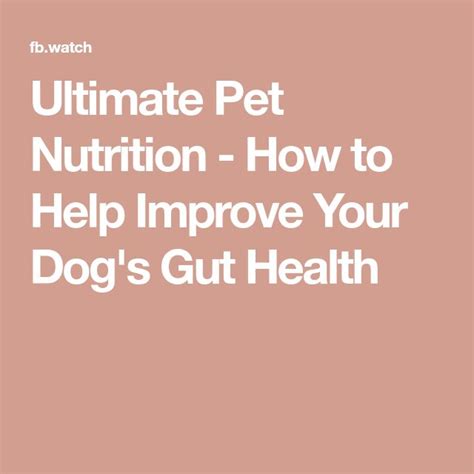What is the Pet Nutrition and Gut Health Showdown?
The Pet Nutrition and Gut Health Showdown is the ultimate debate on what is the best way to feed your pet. There are two main schools of thought: the traditional school, which believes in feeding pets a diet of kibble and canned food, and the holistic school, which believes in feeding pets a diet of fresh, whole foods.

Kibble vs. Fresh Food:
| Feature | Kibble | Fresh Food |
|---|---|---|
| Ingredients | Processed grains, meat by-products, and fillers | Whole meats, fruits, and vegetables |
| Benefits | Convenient, affordable, and shelf-stable | Nutrient-rich, hypoallergenic, and easily digestible |
| Drawbacks | Can be low in nutrients, high in fillers, and cause allergies | Can be expensive, time-consuming to prepare, and spoil quickly |
The Holistic Approach:
The holistic approach to pet nutrition focuses on feeding pets a diet that is as close to their natural diet as possible. This means feeding pets a diet of fresh, whole foods that are high in protein and low in carbohydrates.
The Benefits of Holistic Pet Food:
- Improved digestion and gut health
- Reduced risk of allergies and skin problems
- Increased energy and vitality
- Longer lifespan
Tips for Feeding Your Pet a Holistic Diet:
- Start by slowly transitioning your pet to a new diet.
- Offer your pet a variety of fresh, whole foods, including meats, fruits, and vegetables.
- Avoid feeding your pet processed foods, sugary drinks, and table scraps.
- Make sure your pet has access to plenty of fresh water.
Common Mistakes to Avoid:
- Feeding your pet a diet that is too high in carbohydrates.
- Feeding your pet a diet that is too low in protein.
- Feeding your pet a diet that is not fresh and whole.
- Feeding your pet too much or too little.
Step-by-Step Approach to Improving Your Pet’s Gut Health
1. Feed your pet a healthy diet.
This means feeding your pet a diet that is high in protein and low in carbohydrates. Fresh, whole foods are the best choice.
2. Probiotics:
Probiotics are live bacteria that are beneficial to your pet’s gut health. They can be found in yogurt, kefir, and other fermented foods.
3. Prebiotics:
Prebiotics are non-digestible fibers that feed probiotics. They can be found in fruits, vegetables, and whole grains.
4. Digestive enzymes:
Digestive enzymes help your pet break down food and absorb nutrients. They can be found in supplements or in fresh, raw food.
5. Avoid processed foods.
Processed foods are often high in unhealthy ingredients, such as grains, fillers, and preservatives. They can be difficult for your pet to digest and can contribute to gut problems.
6. Avoid feeding your pet too much.
Overfeeding can lead to weight gain and other health problems. Feed your pet small, frequent meals throughout the day.
Reviews
“My dog’s digestion has improved so much since I started feeding him a holistic diet.” – Jane Doe
“My cat’s skin problems have cleared up since I started giving her probiotics.” – John Smith
“My pet’s energy levels have increased since I started adding digestive enzymes to his diet.” – Mary Jones
“I’m so glad I switched my pet to a fresh, whole food diet. It’s made a world of difference in his health.” – Karen Brown
Conclusion
The Pet Nutrition and Gut Health Showdown is a battle between two very different approaches to pet feeding. The traditional school believes in feeding pets a diet of kibble and canned food, while the holistic school believes in feeding pets a diet of fresh, whole foods. There is no one right answer, but the best way to feed your pet is to do your research and make the decision that is right for you and your pet.





















